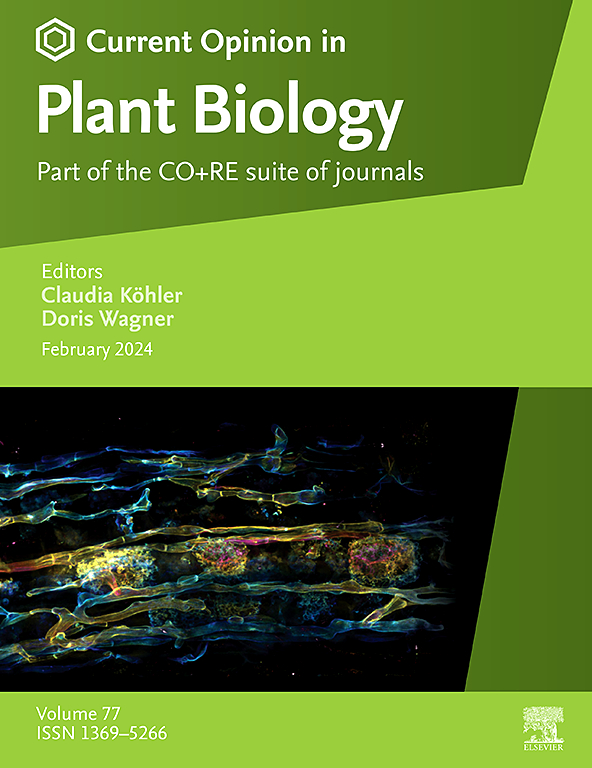Flowering time regulation through the lens of evolution
IF 7.5
2区 生物学
Q1 PLANT SCIENCES
引用次数: 0
Abstract
Flowering, the onset of reproductive development, marks a critical transition in the angiosperm life cycle. In the model plant Arabidopsis thaliana, the process is tightly regulated by a complex network of approximately 300 genes organized into distinct pathways. This mini-review examines the genetic and molecular mechanisms regulating flowering time from an evolutionary perspective. Our analysis reveals that genes involved in the age and photoperiod pathways are evolutionarily ancient and highly conserved across bryophytes and vascular plants. In contrast, other regulatory modules appear to have evolved more recently, likely through the repurposing of existing genes or adaptations to environmental changes. We propose that future research should shift away from studying flowering regulation mechanisms in individual model plants to exploring the evolution of flowering time pathways and their underlying drivers. Adopting an evolutionary perspective may ultimately illuminate the fundamental principles governing the timing of reproductive development in plants.
从进化的角度看开花时间的调节
开花,生殖发育的开始,标志着被子植物生命周期的一个关键转变。在模式植物拟南芥中,这一过程受到一个由大约300个基因组成的复杂网络的严格调控,这些基因被组织成不同的途径。这篇综述从进化的角度探讨了调控开花时间的遗传和分子机制。我们的分析表明,参与年龄和光周期途径的基因在苔藓植物和维管植物中进化古老且高度保守。相比之下,其他调节模块似乎是最近才进化出来的,可能是通过对现有基因的重新利用或对环境变化的适应。我们建议未来的研究应从研究单个模式植物的开花调节机制转向探索开花时间途径的进化及其潜在驱动因素。采用进化的观点可能最终阐明支配植物生殖发育时间的基本原则。
本文章由计算机程序翻译,如有差异,请以英文原文为准。
求助全文
约1分钟内获得全文
求助全文
来源期刊

Current opinion in plant biology
生物-植物科学
CiteScore
16.30
自引率
3.20%
发文量
131
审稿时长
6-12 weeks
期刊介绍:
Current Opinion in Plant Biology builds on Elsevier's reputation for excellence in scientific publishing and long-standing commitment to communicating high quality reproducible research. It is part of the Current Opinion and Research (CO+RE) suite of journals. All CO+RE journals leverage the Current Opinion legacy - of editorial excellence, high-impact, and global reach - to ensure they are a widely read resource that is integral to scientists' workflow.
 求助内容:
求助内容: 应助结果提醒方式:
应助结果提醒方式:


